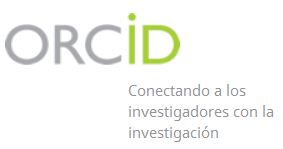Consumo de cigarrillos en la pandemia del SARS-CoV-2, Cuba 2020
Palabras clave:
consumo, precio, cigarrillos, COVID-19.Resumen
Introducción: El año 2020 tiene especial interés, pues muchos meses transcurrieron con la presencia de la pandemia y cuarentena por la COVID-19. El confinamiento, produjo que afloraran la ansiedad, depresión, estrés y miedo, generado por las posibilidades de contraer la enfermedad, con impacto en el tabaquismo y otras adicciones.Objetivo: Caracterizar el mercado de cigarrillos en Cuba en el 2020.
Métodos: Se realizó un estudio convencional; observacional, descriptivo, transversal. Se utilizó alternativa de fuente de datos agregados de series temporales. Se emplearon las técnicas: análisis de información secundaria, entrevista individual a informantes clave, observación no participante y criterio de expertos mediante el método Delphi modificado. La información se ofrece en frecuencias y porcientos.
Resultados: El consumo per cápita en la población cubana de 15 años y más, fue de 1 537 cigarrillos, 4,98 % de incremento de con relación al 2019. El precio promedio estimado de la cajetilla de cigarrillos fue 11,23 pesos cubanos, con crecimiento de 2,18 %; de cada 100 cigarrillos que se vendieron, 38 fueron adquiridos en pesos cubanos convertibles y 62 en pesos cubanos. Se mantuvo la inelasticidad precio - demanda de cigarrillos con coeficiente de 0,43.
Conclusiones: La pandemia ocasionada por el virus del SARS-CoV-2 y los factores sociales y económicos inherentes, se presentan como causa fundamental del incremento de la demanda en el periodo estudiado, que rompe la tendencia decreciente de los últimos tres años; aunque se produjo discreto incremento del precio promedio de la cajetilla de cigarrillos, los fumadores no resultaron ser sensibles.Descargas
Citas
2. Lorenzo RA, Díaz AK, Zaldívar PD. La psicología como ciencia de afrontamiento a la Covid-19: apuntes generales. Anales de la Academia de Ciencias de Cuba. [en línea] 2020: [acceso: 15 Feb 2021]; 10(2) Disponible en:
http://www.revistaccuba.cu/index.php/revacc/article/view/939
3. Orellana C, Orellana LM. Predictores de síntomas emocionales durante la cuarentena domiciliar por pandemia de COVID-19 en El Salvador. Actualidades en Psicología. [en línea] 2020. [acceso: 11 Feb 2021]; 34(128):103-120. Disponible en: https://revistas.ucr.ac.cr/index.php/actualidades
4. Huarcaya-Victoria J. Consideraciones sobre la salud mental en la pandemia de covid-19. Revista Peruana de Medicina Experimental y Salud Publica. [en línea] 2020; [acceso: 20 Feb 2021]; 37(2):327-34. Disponible en:
https://doi.org/10.17843/rpmesp.2020.372.5419
5. El tabaquismo y la pandemia del coronavirus en Cuba. Infodir. [en línea] 2021; [acceso: 11 Feb 2021];34: (enero – abril) Disponible en:
http://www.revinfodir.sld.cu/index.php/infodir/article/view/847
6. Organización Mundial de la Salud. Declaración de la OMS sobre consumo de tabaco y Covid- 19. [Internet] Ginebra: OMS; [acceso: 11 Feb 21];11 de febrero 2020[en línea] [aprox. 2 pantallas]. Disponible en: www.who.int/es
7. Suárez LN. Consumo, precio y segmentación del mercado de cigarrillos. Cuba. 2017. Revista Cubana de Salud Pública. [en línea] 2018; 44 (4): e135 [acceso: 12 Feb 2021]; Disponible en: https://www.scielosp.org/article/rcsp/2018.v44n4/125-139/
8. Suárez LN. Normas legales para la reducción del consumo de cigarrillos. Cuba. Horizonte sanitario. [en línea] 2021; 20(1): 37-48 [Acceso: 20 Feb 2021] Disponible en:
https://revistas.ujat.mx/index.php/horizonte/article/view/3778/3149-0002-4637-2876
9. Ministerio de Finanzas y Precios. Informe al sexto periodo ordinario de sesiones de la IX legislatura de la Asamblea Nacional del Poder Popular. [en línea] 16 de Diciembre de 2020. [Acceso 21 Ene 2021] Disponible en: http://www.cubadebate.cu
10. Rezitis AN, Brown AB, Foster WE. Dynamic Factor Demands for US Cigarette Manufacturing Under Rational Expectations. Applied Economics [en línea] 2001: [acceso: 26 Feb 2021] 33:1301-1311. Disponible en:https://www.tandfonline.com/doi/pdf/10.1080/00036840122398?needAccess=true
11. Suárez LN. Consumo de cigarrillos y elasticidad precio-demanda. Cuba. 2016, Revista Horizonte Sanitario, [en línea]. 2017 [acceso 21 Feb 2021]; 16 (3):163-178. Disponible en: http://revistas.ujat.mx/index.php/horizonte
12. Figueredo RO, Carmona TE, Izquierdo FL. Cinco datos claves de la economía cubana en 2020 y proyecciones para el próximo año. Cubadebate. [en línea] 30 diciembre 2020. [acceso: 19 Ene 2021] Disponible en: http://www.cubadebate.cu
13. Grundy EJ, Suddek T, Filipidis FT, Majeed A, Coroni-Cronberg S. Smoking, SARVCoV-2 y COVID-19: A review of rewiews considering implications for public health policy of practice. Review Paper. Tob Induc Dis. [en línea] 2020 [acceso: 26 Feb 2021]; 18(58): 1-11. Disponible en: http://doi.org/10.18332/tid/124788
14. Kowitt SD, Cornacchione JR, Kristen LJ, et. Al. Tobacco Quit Intentions and Behaviors among Cigar Smokers in the united States in Response to Covid-19. Int. J. Environ. Res. Public Health Pud [en línea] 2020; [acceso: 26 Feb 2021]; 17 (15) : 5368 Doi: 10.339/ijerph17155368
15. Hernández GC, Suarez LN. Salud y bienestar en el tiempo de la pandemia de la COVID-19. Ponencia presentada en la XVIII Convención Anual y Simposio Internacional de la Red Iberoamericana de Mercadotecnia en Salud. Virtual. México. [en línea] Septiembre 2020. [acceso: 26 Feb 2021]; Disponible en: hrrp://www.rims.org.mx
16. Figart DM., et al. Review of Social Economy Social Economics. JSTOR. [en línea] 2010; [acceso: 26 Ene 2021]; Disponible en: 68(2):237-250 Disponible en: https://www.jstor.org/stable/412885
17. Otero M Ayesta FJ. El tabaquismo como trastorno adictivo. ELSEVIER Trastornos Adictivos. [en línea] 2004; [acceso: 05 Ene 2021]; 6(2): 78-88. Disponible en: https://www.elsevier.es/es-revista-trastornos-adictivos-182-articulo-el-tabaquismo-como-trastorno-adictivo-13059449
Descargas
Publicado
Cómo citar
Número
Sección
Licencia
Aquellos autores/as que tengan publicaciones con esta revista, aceptan los términos siguientes:
- Los autores/as conservarán sus derechos de autor y garantizarán a la revista el derecho de primera publicación de su obra, el cuál estará simultáneamente sujeto a la Licencia de reconocimiento de Creative Commons que permite a terceros compartir la obra siempre que se indique su autor y su primera publicación esta revista.
- Los autores/as podrán adoptar otros acuerdos de licencia no exclusiva de distribución de la versión de la obra publicada (p. ej.: depositarla en un archivo telemático institucional o publicarla en un volumen monográfico) siempre que se indique la publicación inicial en esta revista.
- Se permite y recomienda a los autores/as difundir su obra a través de Internet (p. ej.: en archivos telemáticos institucionales o en su página web) antes y durante el proceso de envío, lo cual puede producir intercambios interesantes y aumentar las citas de la obra publicada. (Véase El efecto del acceso abierto).





